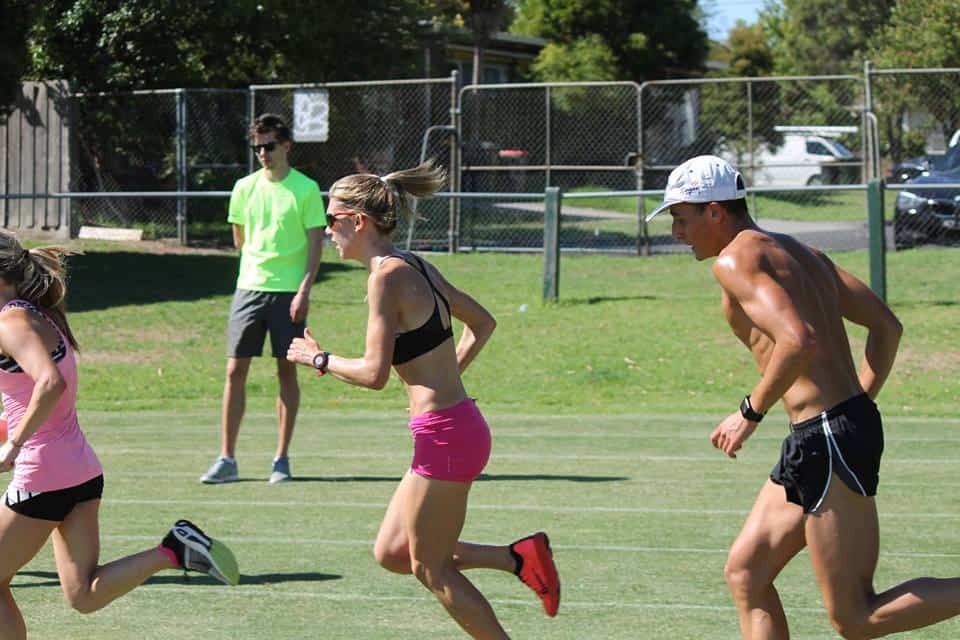MATT FITZGERALD – Runner’s Tribe
Matt Fitzgerald is an acclaimed endurance sports coach, nutritionist, and author. His many books include The Endurance Diet, 80/20 Running, and How Bad Do You Want It?
The body is smart. When you increase your habitual activity level, your body consumes more energy and therefore requires more energy input from food to meet its elevated needs. No problem. Our bodies are outfitted with internal sensors capable of detecting such caloric deficits and ratcheting up appetite in response.
Same thing when your habitual activity level decreases, as mine did recently when I stopped running after I was hit with the double whammy of post-acute COVID-19 syndrome and the diagnosis of a heart condition. At the time I made this decision, I was mildly concerned about gaining weight as a consequence of my more sedentary lifestyle. I should have given my body more credit. As it turned out, my appetite decreased proportionately to my activity level, so that I am now perfectly sated by a sharply reduced level of food that serves to maintain a stable weight.
The process isn’t always quite so automatic, however. Our modern environment is radically different from that in which our appetite regulatory system evolved. Some of these differences, such as social pressure to maintain a thin appearance, cause many of us to lose the ability to read internal signals of hunger and satiety or to simply override them consciously or unconsciously. In my many years of coaching, I have worked with a handful of athletes, all of them women, whom I couldn’t just assume would eat more as their training load increased, and the consequences were never good. This phenomenon (which does affect male athletes too, though not as many) has become alarmingly widespread and is drawing increasing attention from the scientific community.

Within just the past couple of weeks, two new studies on undereating in women runners have been published. The first of these was conducted by an international team of researchers led by Karine Schaal of UC Davis and published in Applied Physiology, Nutrition, and Metabolism. Sixteen eumenorrheic runners were subjected to four weeks of intensified training (131 percent of their baseline running volume) followed by a two-week recovery (65 percent of baseline volume). Calorie intake and markers of overreaching were monitored throughout.
Of the 16 subjects, nine were able to adapt positively to intensified training (meaning their running performance improved), while the other seven experienced a reduction in performance, indicating a state of nonfunctional overreaching. As a group, the runners who adapted positively succeeded in maintaining adequate energy availability despite their sudden increase in energy expenditure. In other words, they ate enough extra calories to make up for the extra calories they were burning. Among those whose performance declined during the four weeks of stepped-up training, however, calorie intake barely budged, creating a persistent energy deficit that would explain their struggles.
But that’s not all. The two groups also showed significant differences in ovulatory function, with no changes occurring in the well-adapted group and members of the maladapting group showing a decrease in the hormone estradiol and a shortening of the luteal phase of the menstrual cycle. What’s more, and counterintuitively, the runners who ate more in response to increased training lost a greater amount of weight than the runners who failed to keep up with their elevated caloric needs.
Which brings us to the second study. This one was led by Johanna Ihalainen of the University of Jyväskylä in Finland and published in the International Journal of Sports Physiology and Performance. Thirteen female runners and eight nonrunner controls were monitored over an entire year. All of them completed the Low Energy Availability in Females Questionnaire and submitted to anthropometric, energy intake, and peak oxygen uptake assessments at four time points throughout the year. Although, as a group, the runners were found to have energy availability equal to that of the nonrunners, eight of the runners were amenorrheic, and these runners were more frequently injured than the five eumenorrheic runners and their performance did not improve over the study period, whereas the others did get faster.
Together, these two studies add to an existing trove of evidence that it is critically important for runners and other athletes to eat enough to fully meet their body’s energy needs. Many are fortunate enough to be able to do this automatically, without really thinking about it. But what if you’re not?
I’m not a big fan of counting calories in general, but I concede that it is a useful practice for those who struggle to eat enough. It requires that you put a consistent effort into calculating your day-by-day calorie burning and keep a running tally of food calories consumed throughout each day, aiming for equal totals on both sides of the ledger. The two big problems with calorie counting are that, 1) unless you happen to live inside a metabolic chamber and own a bomb calorimeter, it is impossible to do so with scientific accuracy, and 2) it’s a pain in the rear, so I encourage even those athletes who tend to undereat to treat it as a temporary crutch.
Your ultimate goal should be to retrain yourself to eat mindfully. This is how those of us who consistently eat the right amount manage do so automatically, and it’s a fundamental human ability that everyone is born with and anyone who has lost touch with can reacquire by working at it. For more on how, read this past article of mine.
